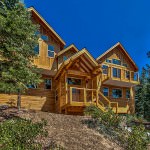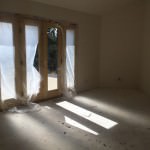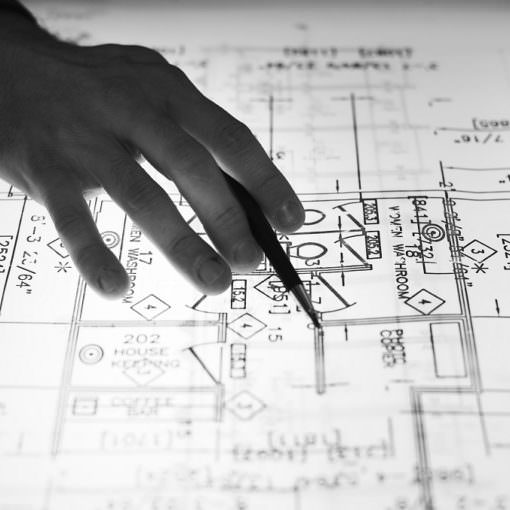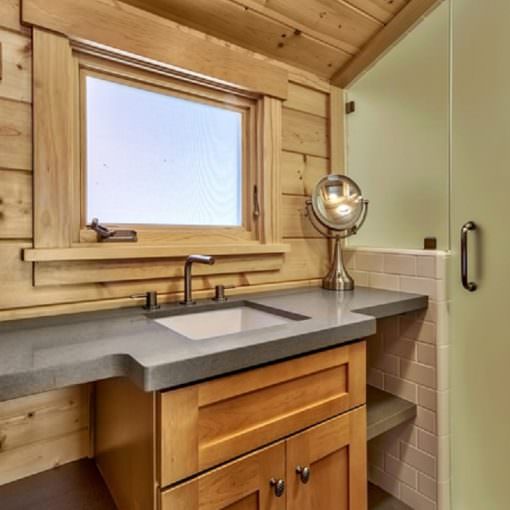 Over the last year I’ve seen more home buyers consider the possibility of building a new home on a vacant lot versus buying an older, already constructed property in Lake Tahoe. There are several reasons for this, but one of the main reasons is the fact that they can’t find the home they desire within their price range. The majority of prospective buyers assume that it’s much cheaper to purchase a home that’s already constructed than to start over and build new. That’s mostly true, however as the market continues to appreciate, this situation will change just like it did in the early to mid 2000’s.
Over the last year I’ve seen more home buyers consider the possibility of building a new home on a vacant lot versus buying an older, already constructed property in Lake Tahoe. There are several reasons for this, but one of the main reasons is the fact that they can’t find the home they desire within their price range. The majority of prospective buyers assume that it’s much cheaper to purchase a home that’s already constructed than to start over and build new. That’s mostly true, however as the market continues to appreciate, this situation will change just like it did in the early to mid 2000’s.
One of my client’s last year was looking for a vacant lot to buy so that he could build his dream home in Lake Tahoe. When he first decided to move forward with his idea, he asked me what he should look for when buying a vacant lot. To answer his question, I thought about the top 10 most important factors to consider when looking for a lot to build your Tahoe Dream Home on:
Here are My Top 10 Factors to Look for When Buying a Lot in Lake Tahoe:
1. What is the lot’s IPES score? IPES stands for “Individual Parcel Evaluation System.” In the 1980’s, the TRPA (Tahoe Regional Planning Agency) worked with agencies and interest groups to come up with an accurate classification system for lots in the Lake Tahoe Basin. IPES assigns a numerical score to vacant parcels that shows their relative suitability for development. 1,100 points are assigned to each lot by a team that consists of a soil scientist, a hydrologist and a planner/engineer. To make it as easy as possible, they use the magic number 726 to figure out how buildable the lot really is. For example, IPES scores that are above 726 means that it will be EASIER to build upon and anything below, means it will be more DIFFICULT. Erosion hazard, runoff potential, access, steam environment zone, condition of watershed, need for water quality improvements and distance from the lake are all scored within the topic’s allotted point value.
2. How much coverage can the lot have? The base allowable coverage depends on where the lot is located. If you need more coverage to build on than what is allowed, it may or may not be possible to transfer in that additional coverage, as you would have to get approved through the TRPA. It could be very costly to buy coverage depending on which hydro-logic zone the lot is located in.
3. Does the lot already have allocations issued? This is a big one right now in the Lake Tahoe real estate industry. Since there are only a few building permits allowed each year in Tahoe, a property with permits already issued will be much easier to build on. For example, many new home buyer’s are purchasing lots that have old, uninhabitable homes on them, tearing those old structures down and then building their brand new dream homes on the lots instead. This loophole is a great way to bypass having to get all new building permits, since the allocations that were used on the old structures are transferable to the new ones!
4. Understand what the TRPA rules are: There are quite a few rules and regulations in the Lake Tahoe Basin due to the sensitive environmental protections in place for the lake itself. All of TRPA’s regulations are easy to access though they may seem a bit cumbersome and confusing. The code of ordinances takes hours of investigation and hands on experience to thoroughly understand. However, using knowledgeable, local experts such as a good Realtor or Construction consultant like Paradise Real Estate’s very own Tony Cappel (who is both!) will help you navigate through the processes A LOT easier than trying to do it on your own.
5. Understand the costs involved BEFORE you start building: It isn’t cheap to build a new home in Lake Tahoe, especially once all of the permits and fees are obtained. Those alone could cost you anywhere from $30,000-$40,000 before you even break ground to start building. Permit costs have gone up along with the sewer and water connection fees with the South Tahoe Public Utility District, so make sure you do all your homework before you start your project.
6. What are the Building/Zoning Restrictions? “Know what you can build…in the space you wish to build it.” You can easily research building/zoning restrictions by looking up the Plan area statements that are found on the city’s website or through the TRPA.
7. Is the lot near shopping and schools or far from town? This factor may not affect you in the beginning, but it may affect the resale value when you decide to sell your home. Location is becoming more and more important in regards to potential rental income. Proximity to skiing, how close to the lake you are, etc., as these are all driving forces for potential revenue.
8. What is snow removal like in the area? Everyone knows that it snows in Lake Tahoe, that’s no secret. You should definitely think about winter driving when deciding where your lot should be. Ask yourself if you need snow plowed roads or if you can handle 4 wheel drive terrain to get around during the winter? For example the North Upper Truckee neighborhood is considered to have very heavy snow and driving during the winter can be challenging, especially without the right vehicle. It’s also very important to consider the orientation of the home on the vacant parcel you are considering to purchase. During the winter, if the front of the house has a steep driveway and is on the North side of the building, this could make the driveway very difficult to navigate on due to the snow fall and ice that will form during Tahoe’s winter months.
9. Are there utilities on the lot? It is much easier and less costly to build on a lot where utilities are already in place or nearby. Some lots may be so far away from existing utility lines that it wouldn’t be cost effective to build. Not a huge consideration in Lake Tahoe however, since most lots in South Lake are serviced by all utilities.
10. Are there existing roads to access the lot? Roads are important unless you want to access by snowmobile or quads. If there aren’t any roads that access the lot, you’ll need to consider this expense, which will be quite large. This won’t be an issue though, because almost 99% of Lake Tahoe’s vacant lots have road access.
If you are seriously considering building a custom home in Lake Tahoe, I would recommend contacting a local Real Estate agent to help you through the process.



